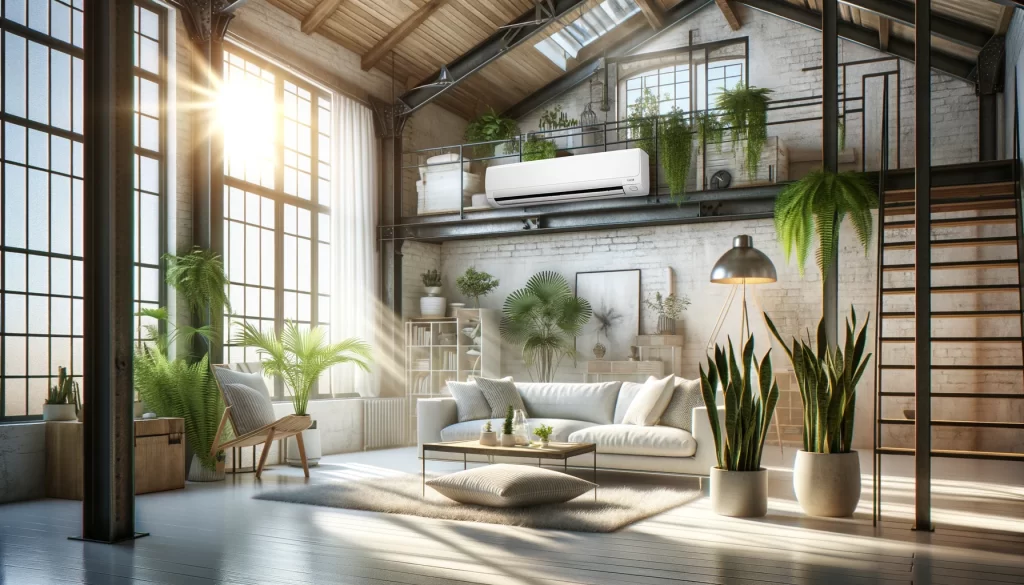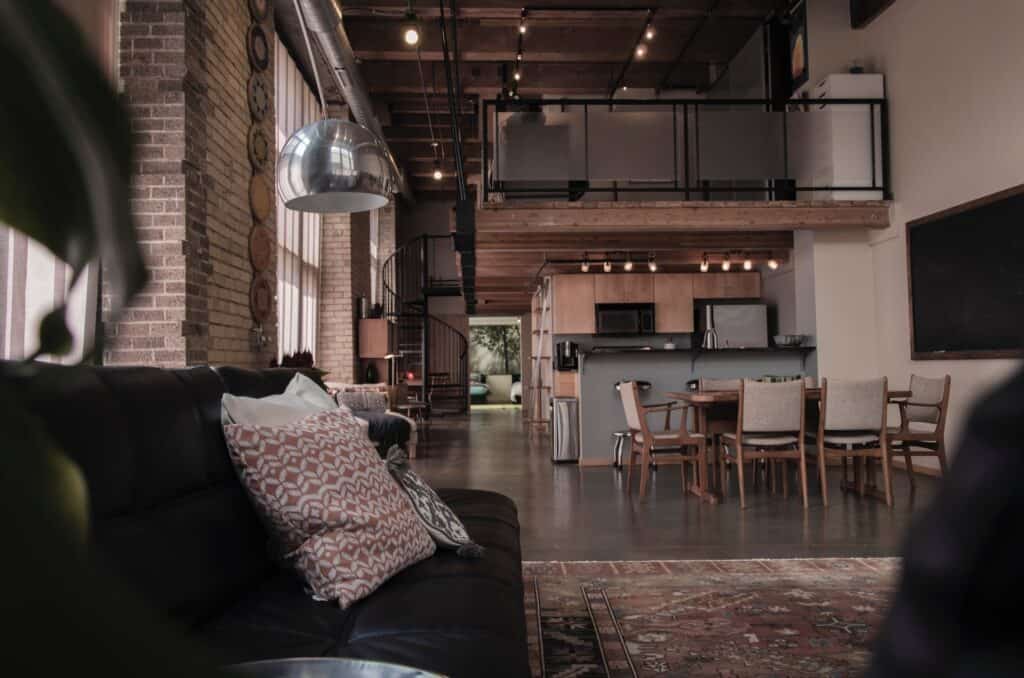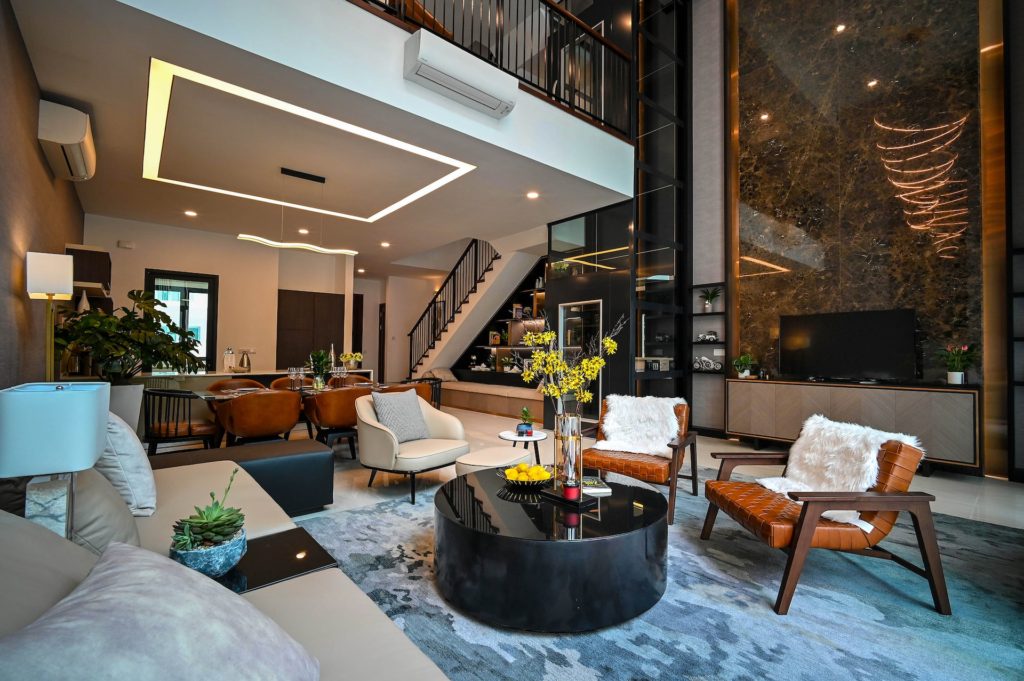Ah, summer! It’s that time of year when our beloved loft apartments, with their spacious interiors and big, beautiful windows, can get surprisingly hot. I mean, who would’ve thought these cool-looking spaces could turn into ovens under the summer sun, right? But don’t sweat it! There are plenty of ways to keep your place chill and comfy. Whether you’re trying to beat the heat in your loft or just want to make your home a bit cooler, getting the right cooling strategies in place is what it’s all about.
Understanding Loft Heat Dynamics
Heat behaves in predictable ways: it rises, accumulates, and intensifies in enclosed spaces, particularly those at the top of buildings like lofts. These upper-floor abodes often feature large, picturesque windows that, despite providing ample natural light and stunning views, can contribute to a greenhouse effect, trapping heat inside. Additionally, the expansive, open layout common in loft designs, while aesthetically pleasing and modern, allows for greater heat retention and less efficient natural cooling.
Addressing these challenges requires a strategic approach to cooling, one that combines modern technology with time-tested techniques. By understanding the specific heat dynamics at play in loft spaces, residents can better tailor their cooling solutions to be both effective and efficient.
Ventilation: The Natural Cooler
Ventilation is a cornerstone of passive cooling, exploiting natural airflows to reduce indoor temperatures and improve air quality. In loft spaces, where heat accumulation is significant due to high ceilings and open areas, promoting good ventilation is essential.
- Cross-ventilation is achieved by opening windows on opposite sides of the loft, creating a breeze that carries heat out of the space. This method can be particularly effective in the evening or early morning when the outside air is cooler.
- Skylights, when opened, act as thermal chimneys, allowing the hot air that rises to the top to escape, thereby promoting air circulation and reducing the overall temperature inside the loft.
Studies indicate that effective cross-ventilation can lower indoor temperatures by up to 5°C, making it a cost-effective and environmentally friendly cooling solution.
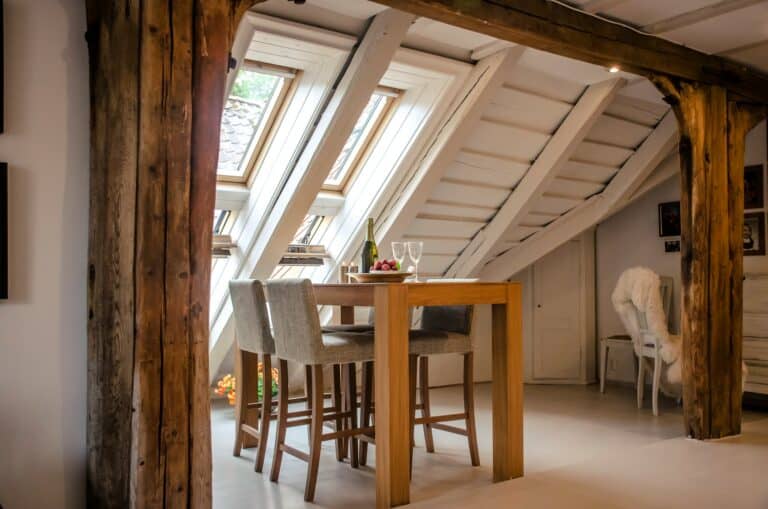
Window Treatments: Shield Against the Sun
The right window treatments can significantly reduce heat gain in loft apartments by blocking or reflecting sunlight before it penetrates the living space.
- Reflective blinds or curtains are designed to bounce back sunlight, thereby reducing the amount of heat absorbed through windows.
- Thermal window films can be applied directly to the glass, reflecting ultraviolet rays and helping to maintain cooler indoor environments.
A California case study found that thermal window films can decrease interior temperatures by as much as 7°C during peak summer days, highlighting the effectiveness of these treatments in combating heat.
Air Conditioning: Customized Cool
Air conditioning is a more direct and controlled way to cool loft spaces, especially when passive cooling methods are insufficient to combat extreme heat.
- Portable air conditioners offer flexibility and convenience, allowing you to move the cooling source to different areas as needed. This can be particularly useful in loft apartments, where certain zones may become heat traps.
- Split-system air conditioners are more permanent fixtures that consist of an indoor unit and an outdoor compressor, effectively managing noise and heat exchange outside the living area. They are ideal for maintaining a consistent cooling environment throughout the loft space.
In Tokyo, a loft conversion project successfully utilized split-system air conditioners to maintain an optimal thermal environment around the clock, significantly enhancing the comfort and livability of the space.
Insulation: The Silent Protector
Effective insulation is a key element in maintaining a comfortable indoor temperature, as it reduces the heat exchange between the interior and exterior of a building.
- Reflective insulation is installed under the roofing material to reflect radiant heat away from the living space, helping to keep the loft cooler in summer.
- Spray foam insulation creates a tight seal against heat and is particularly effective in lofts, conforming to irregular architectural features and preventing heat from seeping into the space.
According to the U.S. Department of Energy, proper insulation can lead to up to a 50% reduction in cooling and heating costs, underscoring its importance in energy-efficient home design.
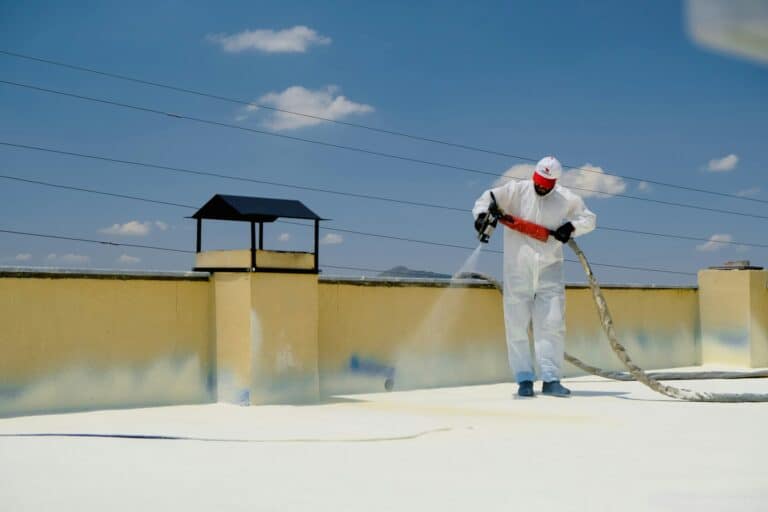
-
Smart Home Technology: The Future of Cool
Integrating smart home technology can greatly enhance the efficiency and convenience of cooling systems in lofts.
- Smart thermostats learn your schedule and temperature preferences, automatically adjusting the cooling based on your habits and the outside temperature. This can lead to significant energy savings and improved comfort.
- Home automation systems allow for the integration of various cooling devices, which can be programmed to operate only when necessary, reducing unnecessary energy consumption.
A smart home in Sweden demonstrated how these technologies can be used to reduce cooling-related energy consumption by 30%, showcasing the potential of smart technology in achieving efficient and sustainable climate control.
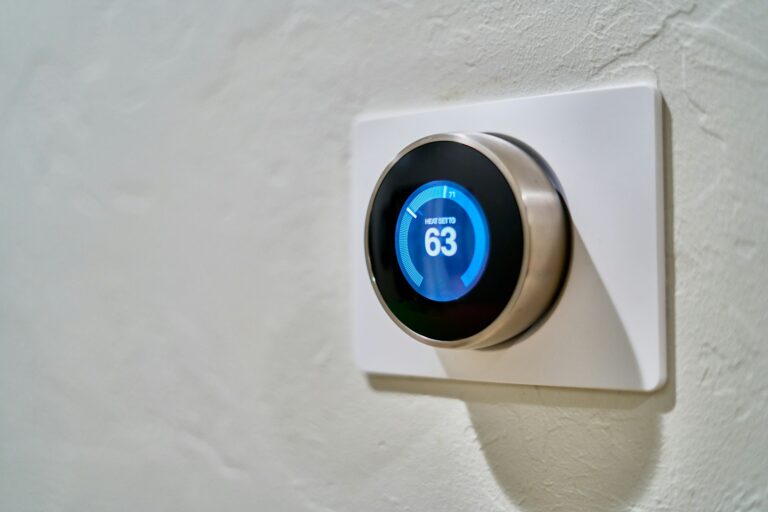
Adapting Loft Cooling Solutions for Regular Homes
Guess what? Those cool tricks we use to keep lofts comfy during the hot months work great in regular homes too! Think about it: wrapping your place up with some smart insulation and setting up ventilation that knows what it’s doing can make a huge difference. And with zoned cooling systems, you can tweak the temperature in different rooms to get it just right, saving energy and feeling more at ease. Plus, blocking out that intense sun with the right window treatments and letting fresh air flow naturally isn’t just for lofts; it’s something any home can benefit from to stay more livable and welcoming.
Innovations in Cooling Technology
The cooling industry is constantly evolving, with new technologies emerging that promise greater efficiency and environmental sustainability. These innovations are not only changing the way we cool our homes but also how we think about energy consumption and comfort.
- Geothermal cooling systems utilize the stable temperature of the earth to cool homes, including lofts, efficiently. This system circulates water through underground pipes, using the earth’s constant temperature to cool or heat it before circulating it through the home.
- Phase change materials (PCMs) can be incorporated into building structures, such as walls and ceilings, to absorb heat during the day and release it at night, thus stabilizing indoor temperatures naturally.
These cutting-edge technologies represent the forefront of cooling solutions, offering both high performance and a reduced environmental footprint.
Sustainable Cooling Practices
Sustainability in cooling practices not only addresses the environmental impact but also enhances the economic and social aspects of living spaces. Here are key sustainable practices that can be integrated into loft cooling strategies:
- Solar power generation: Using solar panels to power cooling systems reduces reliance on fossil fuels and decreases utility bills.
- Green roofing: Planting vegetation on rooftops can help insulate buildings, reducing heat absorption and improving overall energy efficiency.
- Water conservation: Incorporating rainwater harvesting systems to use for cooling purposes, like in cooling towers or for irrigation to support green roofing, can significantly reduce water usage.
Adopting these sustainable practices not only contributes to a healthier planet but also promotes a more cost-effective and self-sufficient lifestyle.

Case Studies and Testimonials
Real-world examples provide concrete evidence of the effectiveness of various cooling solutions:
Nature-Based Solutions for Cooling in High-Density Neighbourhoods in Shenzhen: This study focused on the Baishizhou neighborhood in Shenzhen, evaluating how nature-based solutions like trees, green roofs, and green facades can improve urban living environments and provide significant cooling effects, especially in high-density areas.
Panasonic Cooling Solutions: Panasonic provides various case studies on their website demonstrating different applications of their cooling technologies. They showcase projects in residential, commercial, and public buildings, emphasizing energy-efficient cooling solutions like air-to-water heat pumps and smart climate control systems.
Microsoft Loft Case Study by Exhibit Solutions Inc.: This case study highlights the creation of a loft space designed to educate retail store managers about new Microsoft products. It showcases how a thoughtfully designed environment, mimicking a loft, can enhance learning and engagement, indirectly touching on the importance of comfortable and adaptable spaces.
Panasonic’s Project in Scottish Bungalow: A specific example is the installation of the Panasonic Aquarea L Series Air to Water heat pump in a Scottish bungalow, demonstrating how innovative and sustainable cooling solutions can be integrated into residential spaces for improved climate control and energy efficiency.
These case studies provide real-world examples of how various cooling strategies and technologies can be effectively implemented in different settings, from urban apartments to individual homes and commercial spaces.
Conclusion
The journey to finding the perfect loft cooling solution is a blend of understanding the unique challenges of your space, exploring innovative technologies, and implementing sustainable practices. By combining these elements, loft residents can create an environment that is not only cool and comfortable but also energy-efficient and environmentally friendly. Whether it’s through strategic ventilation, advanced insulation, smart technology integration, or green initiatives, there are myriad ways to achieve an optimal cooling balance in loft apartments and homes alike.

